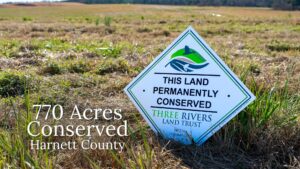
by Crystal Cockman
June 7th, 2016
With springtime here, many folks are venturing into nature for outdoor adventures. For many of us that means camping. Whether primitive camping, car camping, or camping in your RV, one favorite aspect of camping to many people is having a campfire. We all like the comfort of a roaring fire, many of us cook on it, and still others use it to roast marshmallows for s’mores. One important thing to remember when you build campfires is to purchase firewood locally and not move it from where you are to where you are camping.
Moving firewood can spread invasive pests in the way of tree-killing insects and diseases, which are often found in campgrounds and parks. In addition to not taking it with you to where you are camping, don’t bring it back either. Buy it where you burn it. A good rule of thumb is to use wood that was cut within 50 miles of where you’ll be burning it. Even if firewood looks fine, it can have insect eggs or fungi spores that can start an infestation. Aged or seasoned wood does not need to be moved either, just because it is dry doesn’t mean it can’t carry insects or disease. Learn more at www.dontmovefirewood.org.
One such invasive pest that could be moved on firewood is the emerald ash borer (EAB) (Agrilus planipennis). EABs are a type of beetle, and adults are metallic green and about ½ inch long. They are native to eastern Asia. EABs probably entered the country from Asia in wood packaging material. They were first discovered in America near Detroit, Michigan in the summer of 2002. They were found in North Carolina in the summer of 2013. They are now found in 25 states and 2 Canadian provinces.
Emerald ash borer attacks predominantly only ash trees (Fraxinus species), including green ash, white ash, black ash, and blue ash. It has been known to attack fringe trees, as well. Adult beetles feed on the leaves of trees and cause little damage; however, the larvae feed on the inner bark of trees preventing the trees ability to transport nutrients and effectively girdling the tree. When they emerge from the tree, they leave a D-shaped exit hole. EABs have already killed millions of ash trees in North America.
Another invasive pest that is can be transported on wood is the Asian Longhorned Beetle (ALB) (Anoplophora glabripennis). They are native to eastern China, Japan, and Korea. They were first discovered in the United States in 1996 in Brooklyn, New York. They are shiny black with white spots on their wing-covers, and long-antennae banded black and white. They feed on a variety of tree species, but maple is the most common in North America, then elm and willow. Like EAB, tree mortality is caused by larval feeding. ALB have been eradicated from some cities, including Chicago and Boston.
There are a lot of other insects that can infest wood, as well. Please remember when you take your own camping trips this spring to use local firewood to help control invasive pest populations. We need our native forests around for future generations to enjoy.